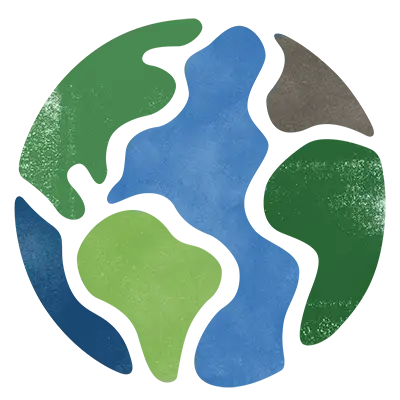8/8/2025
Helping Create a Water Positive Future: Learn more about P&G’s Strategy

Water is essential for the making and use of our products. Our comprehensive strategy includes reducing water in our operations, restoring water in 18 water-stressed areas around the world where we operate, and responding to water challenges through innovation and partnerships. Notably, 70% of P&G products require water for use, making water stewardship even more vital. This blog post addresses the top frequently asked questions about our Water Positive Future strategy.
1. How is P&G contributing to a water positive future?
P&G aspires to contribute to a water positive future where water can sustain people, nature, and P&G operations now and for generations to come. Our ambitions focus on reducing water in our operations, helping restore water in water-stressed areas and responding to water challenges through innovation and partnership.
2. What specific actions is P&G taking to reduce water usage in operations?
We’ve set goals to make our facilities and manufacturing plants more water efficient. They include reducing water use at our manufacturing facilities by 35% per unit of production (vs. 2010 baseline) and recycling and reusing five billion liters of water by 2030. All P&G sites located in high water-stressed areas are required to understand their local watersheds and create action plans and strategies that seek to address the challenges impacting both our operations and the local communities.
3. How does P&G restore water in water-stressed areas?
P&G is helping to restore water in 18 water-stressed areas around the world where we operate. This involves collaborating with local partners to implement long-term projects that aim to improve, manage or protect freshwater resources. This can include projects that are helping to restore wetlands, replenish aquifers, improve irrigation efficiency or water quality, and more.
4. What water goals has P&G set for by 2030?
P&G has established ambitious goals for 2030, including:
- Increase water efficiency at P&G facilities by 35% per unit of production (vs. 2010 baseline)
- Recycle and reuse 5 billion liters of water in P&G facilities annually
- Restore more water than is consumed at P&G manufacturing sites in 18 water-stressed areas around the world. This goal focuses on water that evaporates during the manufacturing process or is incorporated into our finished products.
- Restore more water than is consumed during the use of our products in the water-stressed metropolitan areas of Mexico City and Los Angeles. This goal focuses on water that leaks or evaporates in households during the use of P&G products.
- Provide 25 billion liters of clean drinking water to children and families in need around the world by 2025 through the P&G Children’s Safe Drinking Water (CSDW) Program.
5. How does P&G educate consumers about water conservation?
P&G believes in empowering consumers to make a positive impact on water conservation. Through product innovation and educational initiatives, we aim to promote water-saving practices at home. For example, our Cascade Platinum Plus ActionPacs enable consumers to skip the pre-wash. This can save up to 20 gallons of water per dishwasher load. And, when multiplied by all dishwasher users that pre-wash, this can save up to 150 billion gallons of water each year!
6. What role does innovation play in P&G’s water strategy?
Innovation is at the heart of P&G's water strategy. We are continuously working to develop new products and technologies that help consumers reduce their water usage while they continue to enjoy a positive experience. Our partnership with the 50 Liter Home Coalition exemplifies this ambition, aiming to create a resilient water future where 50 liters of daily water use per person feels like 500 — the average per capita daily household water use in some parts of the world. The Coalition’s pilot in Los Angeles is showing us how our experience in innovation and consumer understanding can help unlock new solutions to water challenges, and help consumers live more sustainably while continuing to enjoy delightful in-use experiences.
7. How does P&G collaborate with other organizations to address water issues?
Across the world, and even within countries, there is a diverse mix of landscapes, cultures, economies and climates that make water issues complex and require solutions unique to each river basin. That is why we embarked on a data-based water risk assessment with expert partners at World Resources Institute (WRI), World Wildlife Fund (WWF) and Environmental Resources Management (ERM) to identify the areas of the world we should focus on for maximum positive impact.
And the Bonneville Environmental Foundation’s (BEF) Business for Water Stewardship program helps businesses advance smart solutions to ensure that communities, economies and ecosystems have enough clean water to flourish. P&G is working with the experienced team at BEF to turn our water goals into tangible impact in the right places.
8. What challenges does P&G face in its water stewardship efforts?
Water scarcity is a complex issue that varies by region, and addressing it requires understanding the local context. We recognize that no single organization can solve these challenges alone. Our approach involves working closely with on-the-ground partners with a deep knowledge of the local challenges, communities and landscapes to support solutions that will result in meaningful benefits to each water-stressed area.
9. How can I stay updated on P&G’s water initiatives?
P&G shares progress on our water stewardship initiative. For ongoing updates about our goals and progress, you can visit our ESG Investor Portal and explore our latest Citizenship Report.
While there is no simple solution to address water scarcity, we are determined to continue our work to address shared water challenges within water-stressed areas where we operate because we know it is where we can make the biggest difference.
Explore our ESG Investor Portal to learn more about P&G’s water strategy and progress towards our Ambition 2030 goals.